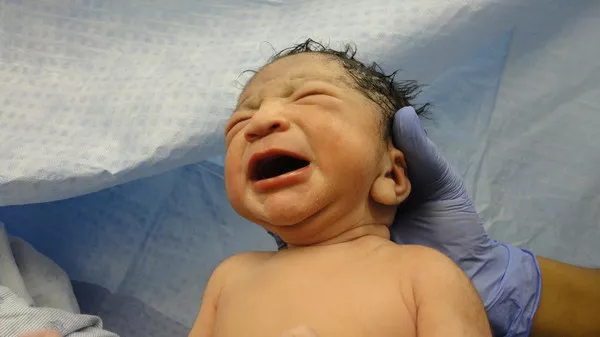Changing diapers is a routine task for parents of infants, but it’s often accompanied by a symphony of tears and wails from the baby. This common occurrence raises questions about why babies cry during diaper changes. Is it simply discomfort, or could there be deeper reasons behind this behavior? In this article, we delve into the science behind why babies cry during diaper changes, exploring various factors that contribute to their distress.
Understanding the Baby’s Perspective
To comprehend why babies cry during diaper changes, it’s essential to consider the experience from their perspective. For newborns and infants, diaper changes disrupt their comfort and security. They may feel exposed and vulnerable when their clothes are removed, especially if they’re in a cold environment. Additionally, the sensation of being cleaned with wipes or washed with water can be unfamiliar and unsettling for them.
Furthermore, babies are highly sensitive to changes in their environment and routine. The interruption of their activities, such as feeding or sleeping, to undergo a diaper change can lead to frustration and agitation. From their perspective, diaper changes represent a disruption to their comfort and a departure from the familiar.
Physical Discomfort
One of the primary reasons babies cry during diaper changes is physical discomfort. Infants have delicate skin that is prone to irritation and rash, particularly in the diaper area. The presence of urine or feces against their skin can cause irritation, leading to discomfort and pain. When a wet or soiled diaper is removed, the exposure of their irritated skin to air and the friction from wiping can exacerbate their discomfort, triggering tears and protests.
Moreover, certain diapering practices or products may contribute to physical discomfort. For example, using diapers that are too tight or abrasive wipes can irritate the baby’s skin, making diaper changes a painful experience. Additionally, if the diaper change is not done quickly enough, allowing the baby to remain in a wet or soiled diaper for an extended period, it can worsen their discomfort and lead to crying.
Sensory Overload
Another factor that can cause babies to cry during diaper changes is sensory overload. For infants, the world is a sensory-rich environment, and diaper changes can overwhelm their developing senses. The sudden exposure to bright lights, unfamiliar sounds, and tactile sensations during a diaper change can be distressing for them.
Furthermore, babies are highly attuned to their caregivers’ emotions and reactions. If parents or caregivers approach diaper changes with anxiety or frustration, the baby may pick up on these cues and become more distressed themselves. This creates a cycle of escalating stress and discomfort for both the baby and the caregiver.
Developmental Factors
Developmental factors also play a role in why babies cry during diaper changes. As infants grow and develop, they become more aware of their bodily functions and the sensations associated with them. The act of having their diaper changed may trigger feelings of embarrassment or shame as they begin to understand the social conventions around cleanliness and hygiene.
Additionally, as babies develop greater mobility and independence, they may resist being restrained during diaper changes. The desire to explore their surroundings and assert their autonomy can lead to protests and tears when they are placed on the changing table or held in place during a diaper change.
Emotional Regulation
Emotional regulation is another aspect to consider when understanding why babies cry during diaper changes. Infants have limited ability to regulate their emotions and communicate their needs effectively. Crying is their primary means of expressing discomfort, frustration, or distress.
During a diaper change, babies may experience a range of emotions, from discomfort and frustration to anxiety and fear. Without the ability to articulate their feelings verbally, they rely on crying as a way to signal their distress and seek comfort from their caregivers.
Parental Response
The way parents respond to their baby’s cries during diaper changes can also influence the frequency and intensity of their distress. If parents respond promptly and soothingly to their baby’s cues, it can help alleviate their discomfort and reduce the likelihood of prolonged crying. Conversely, if parents react with impatience or frustration, it can escalate the baby’s distress and make diaper changes a more traumatic experience for them.
Strategies to Minimize Crying During Diaper Changes
While it’s normal for babies to cry during diaper changes, there are several strategies that parents can employ to minimize their distress:
1. Establish a Routine: Establishing a consistent diaper-changing routine can help reduce anxiety and uncertainty for both the baby and the caregiver. Stick to a regular schedule for diaper changes, and try to anticipate the baby’s needs before they become overly distressed.
2. Use Gentle Products: Choose diapers and wipes that are gentle on the baby’s skin to minimize irritation and discomfort. Avoid harsh chemicals or fragrances that can exacerbate existing skin conditions.
3. Keep the Environment Comfortable: Create a comfortable and calming environment for diaper changes by ensuring the room is warm and well-lit. Minimize distractions and loud noises that could overwhelm the baby’s senses.
4. Provide Distraction: Engage the baby with a toy or sing a soothing song during diaper changes to distract them from any discomfort or anxiety. Offering a pacifier or comfort object can also help provide reassurance.
5. Stay Calm and Patient: Approach diaper changes with patience and calmness, even if the baby becomes upset. Respond to their cues with empathy and reassurance, and try to maintain a soothing tone of voice throughout the process.
Conclusion
In conclusion, babies cry during diaper changes for a variety of reasons, including physical discomfort, sensory overload, developmental factors, and emotional regulation. Understanding the factors that contribute to their distress can help parents and caregivers respond effectively and minimize their discomfort. By establishing a routine, using gentle products, creating a comfortable environment, providing distraction, and staying calm and patient, parents can help make diaper changes a more positive experience for both themselves and their baby.


